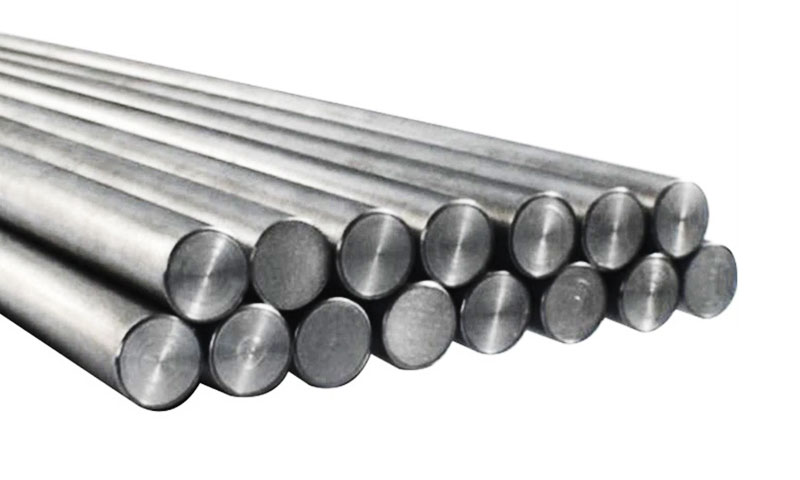1. 소개
우리를 S20910 (commonly marketed as 아크로닉 50 또는 XM-19) and UNS S21800 (commonly marketed as 아크로닉 60 또는 합금 218) are advanced austenitic 스테인리스 강 engineered for demanding service.
Both deliver better performance than conventional 300-series grades, but they are optimized for different priorities:
- S20910 (아크로닉 50) a 부식성, nitrogen-strengthened austenitic stainless optimized for high corrosion resistance (including sour service), 좋은 힘, 탁월한 인성 (including cryogenic), 그리고 좋은 용접성.
It is often specified where resistance to pitting, SCC and low-temperature toughness are required together with reasonable strength. - S21800 (아크로닉 60) is formulated primarily for wear and galling resistance while retaining corrosion resistance typical of austenitics.
It contains high silicon and manganese for tribological performance and is selected where sliding contact, 못살게 괴롭히는, and high wear are the dominant failure modes.
This article compares composition, mechanical and corrosion behaviour, 제작, and real-world application trade-offs so you can select the right alloy for a specific component or environment.
2. What Is UNS S20910 (아크로닉 50)
우리를 S20910, 일반적으로 알려진 아크로닉 50 또는 XM-19, a high-performance nitrogen-strengthened austenitic stainless steel.
It is engineered to deliver a combination of 탁월한 부식 저항, 고강도, 연성, 그리고 강인함, including at cryogenic temperatures.
These attributes make it well-suited for demanding industrial applications such as chemical processing, 해양 환경, and sour-service conditions.
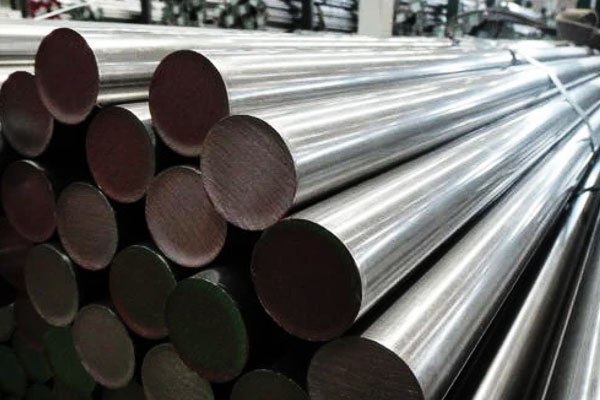
Key material designations and specifications 포함하다:
- ASTM A276 / A479 (as XM-19)
- UNS S20910
- 에서 1.3964
Primary characteristics of UNS S20910 (아크로닉 50):
- 부식 저항: Enhanced by increased chromium, 몰리브덴, 및 질소 함량; highly resistant to pitting and crevice corrosion in chloride environments.
- 기계적 강도: Stronger than conventional 300-series stainless steels, with excellent yield and tensile properties.
- Ductility and toughness: Maintains performance at both elevated and cryogenic temperatures.
- Fabrication and weldability: Can be machined, 형성, and welded with conventional techniques; solution annealing restores ductility after cold working.
- Nitrogen-strengthened: Nitrogen addition increases yield strength and contributes to pitting resistance without compromising austenitic ductility.
- Application suitability: Listed in NACE MR0175 for sour service, suitable for marine hardware, 화학 공정 장비, 압력 성분, and structural applications requiring corrosion resistance and mechanical performance.
3. What Is UNS S21800 (아크로닉 60)
우리를 S21800, 일반적으로로 불리는 아크로닉 60 또는 합금 218, a high-performance austenitic stainless steel designed primarily for wear and galling resistance, while maintaining good corrosion performance typical of austenitics.
Its specialized composition makes it ideal for applications where sliding contact, 접착제 마모, and high surface stress are primary concerns.
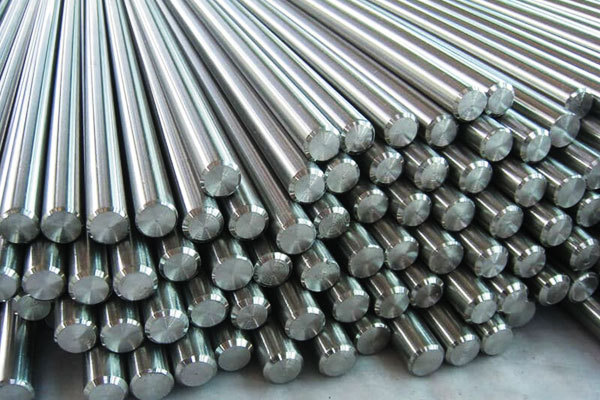
Key material designations and specifications include:
- ASTM A276 / A479 (for bars, 막대, and other wrought forms)
- UNS S21800
Primary characteristics of UNS S21800 (아크로닉 60):
- Wear and galling resistance: Elevated manganese and silicon content, combined with a nitrogen-strengthened austenitic matrix, provides superior resistance to 못살게 괴롭히는, 접착제 마모, and surface seizure.
- 부식 저항: While not as corrosion-resistant as Nitronic 50 in highly aggressive chloride environments, 그것은 제공합니다 좋은 일반적인 부식 저항 suitable for moderate chemical and marine exposures.
- 기계적 강도: Exhibits high strength in both annealed and cold-worked conditions, with excellent surface hardness after work hardening.
- Fabrication and welding: Can be welded and fabricated using standard methods, though its higher silicon and manganese content may require adjustments in welding filler selection and machining parameters.
- Application suitability: 일반적으로 사용됩니다 밸브 줄기, 패스너, 펌프 샤프트, bearing surfaces, and other components subjected to repeated sliding contact or wear-intensive service.
4. Typical Chemical Compositions and Alloying Differences
A critical factor distinguishing UNS S20910 (아크로닉 50) and UNS S21800 (아크로닉 60) is their alloying strategy, which directly influences corrosion resistance, 기계적 강도, wear behavior, and fabrication characteristics.
While both are nitrogen-strengthened austenitic stainless steels, they are optimized for different service priorities.
Representative Chemical Compositions (wt%) and Performance Role
| 요소 | UNS S20910 (아크로닉 50) | UNS S21800 (아크로닉 60) | Key Role in Performance |
| 탄소 (기음) | ≤ 0.06 | ≤ 0.10 | Controls strength, limits carbide formation; low C improves corrosion resistance and weldability |
| 크롬 (Cr) | 20–23 | 16–18 | Primary contributor to corrosion resistance; higher Cr in S20910 increases PREN |
| 니켈 (~ 안에) | 11–14 | 8–9 | 오스테 나이트 스태빌라이저; enhances toughness and ductility; higher Ni in S20910 supports cryogenic performance |
| 망간 (MN) | 5–6 | 8–9 | Increases work-hardening and galling resistance; high Mn in S21800 aids wear performance |
| 규소 (그리고) | ≤ 0.5 | 3.5–4.5 | Improves oxidation and wear resistance; higher Si in S21800 supports galling resistance |
| 몰리브덴 (모) | 1.5–3 | 지정되지 않았습니다 / 추적하다 | 구덩이 및 틈새 부식 저항을 향상시킵니다; present in S20910 to resist chlorides |
| 질소 (N) | 0.10–0.20 | 0.08–0.18 | Strengthens austenitic matrix; 부식 저항을 향상시킵니다; supports wear resistance in S21800 |
| 철 (Fe) | 균형 | 균형 | 매트릭스 요소; balances alloying; provides basic austenitic structure |
Interpretation: S20910 emphasizes Cr + ~ 안에 + 모 + N (classic austenitic corrosion alloying with nitrogen strengthening and Mo for pitting resistance).
S21800 trades some chromium and nickel for elevated silicon and manganese, which improve hardness, wear and galling resistance.
4. Mechanical Properties and Temperature Behaviour
우리를 S20910 (아크로닉 50) and UNS S21800 (아크로닉 60) exhibit distinct mechanical profiles reflecting their alloying strategies.
주요 기계적 특성
| 재산 | UNS S20910 (아크로닉 50) | UNS S21800 (아크로닉 60) | Practical Implication |
| 0.2% 항복 강도 (MPA) | 350–420 | 320–380 | S20910 offers higher baseline strength for corrosion-critical applications; S21800 gains strength via work hardening |
| 인장 강도 (MPA) | 650–750 | 600–700 | S20910 provides slightly higher ultimate strength; S21800 maintains adequate tensile strength with wear focus |
| 연장 (%) | 30–45 | 25–40 | S20910 maintains excellent ductility; S21800 is slightly less ductile but sufficient for forming/fabrication |
| 경도 (HRB / HRC) | HRB ~85 typical annealed | HRB ~85, can be higher with work hardening | S21800’s higher Mn/Si allows superior surface hardness after cold work, enhancing galling resistance |
| 충격 강인함 (J at room temp) | 훌륭한; retains toughness at cryogenic temps (-196° C) | 좋은; slightly lower than S20910 in cryogenic applications | S20910 preferred in low-temperature or highly dynamic loading applications |
| Elevated Temperature Performance | Good up to ~600–700°C | Reasonable; high Si improves oxidation resistance at moderate temperatures | S20910 favored for high-temperature corrosion exposure; S21800 for wear-exposed high-temperature components |
Temperature Behaviour
- Cryogenic Performance:
S20910 retains ~90% of impact energy at liquid helium temperatures, making it suitable for LNG storage, cryogenic piping, 항공 우주 응용.
S21800 retains reasonable toughness but is not optimized for extreme low temperatures. - 높은 온도 성능:
Both alloys maintain dimensional stability and strength at moderate elevated temperatures.
Nitronic 50’s Mo content provides additional resistance to high-temperature corrosion, while Nitronic 60’s high Si content improves oxidation resistance in sliding-contact applications. - 일을 강화합니다:
Both alloys are austenitic and work-hardening, meaning mechanical properties, especially hardness and yield strength, can be increased via cold working.
S21800 benefits most due to high Mn and Si, improving wear and galling performance.
5. Corrosion Resistance and Pitting Resistance (목재)
구덩이 저항에 해당하는 숫자 (목재) is a useful indicator of resistance to chloride pitting; it’s calculated from Cr, Mo and N content (simplified form: PREN ≈ Cr + 3.3× mo + 16× n).
- 아크로닉 50 (S20910) — higher Cr, Mo and N yield PREN values in the low-to-mid 30s (typical engineering figure ≈ ~34).
That places it well above 316L (PREN ≈ 20–25) and makes it suitable for many chloride-bearing environments, including some marine and sour service (it is commonly accepted for NACE MR0175 qualifying in many conditions—verify certificate). - 아크로닉 60 (S21800) — because Mo is typically absent and Cr is lower, PREN is 낮추다 (typical mid-20s or less depending on exact chemistry).
While S21800 resists general corrosion reasonably well, 그것은 ~ 아니다 chosen primarily for pitting resistance; 대신에, it is used where galling and wear are primary concerns.
6. 입다, galling and tribological performance
- 아크로닉 60 (S21800) 설계되었습니다 galling resistance and sliding wear.
High silicon and manganese, combined with work-hardening capacity, produce a surface that resists adhesive wear and metal-to-metal seizure.
Typical uses include valve stems, 좌석, 패스너, and pump components where repeated sliding contact occurs. - 아크로닉 50 (S20910) 제안 좋은 내마모성, but its primary strengths are corrosion resistance and toughness rather than optimized galling resistance.
It is sometimes used in wear applications where corrosion control is also required, but for extreme galling environments S21800 usually outperforms it.
7. 제작, welding and heat-treatment considerations
용접 성
- Both alloys are 용접 가능 by standard processes (싸움, 나, SMAW).
- S20910 (higher Ni/N) is highly weldable and retains corrosion resistance after welding when proper procedures and filler metals are used.
Low carbon and stabilized practices can minimize sensitization risk. - S21800 requires attention to heat input and filler selection because its high Si and Mn can influence weld metal composition; preheat/post-weld heat treatment practices depend on component size and code requirements.
Forming and machining
- Both are 작업 하급 austenitics; S21800’s higher Si/Mn can make cutting more challenging—tooling and speeds need adjustment.
S20910 in solution-annealed condition is generally easier to machine/form.
열처리
- These are austentic alloys—strength is primarily from cold working and alloying; full hardening by quench/tempering is not applicable.
Solution annealing can restore ductility and corrosion resistance (typical anneal ~1000–1100 °C followed by rapid cooling).
Hydrogen/sour service
- S20910’s chemistry and listing in some sour-service guidance make it suitable for H₂S environments (verify NACE/ISO certifications).
For sour service weld procedures and hardness limits (HRC thresholds) are normally enforced.
8. Applications of UNS S20910 vs UNS S21800 Austenitic Stainless Steel
The distinct alloying strategies, 기계적 특성, and corrosion/wear characteristics of UNS S20910 (아크로닉 50) 그리고 UNS S21800 (아크로닉 60) define their suitability across different industrial applications.
Applications of UNS S20910 (아크로닉 50)
UNS S20910 is engineered for 높은 부식 저항, 탁월한 인성, 그리고 좋은 용접성, making it ideal for environments where both corrosion and mechanical performance 중요합니다.
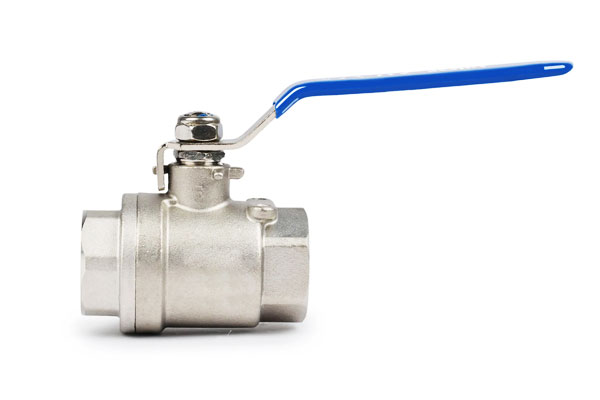
| 산업 / 부문 | 일반적인 응용 프로그램 | Key Performance Requirement |
| 선박 & 난바다 쪽으로 부는 | Seawater fittings, 펌프 샤프트, 패스너, 밸브 | 높은 염화물 내성, prevention of pitting/crevice corrosion |
| 화학적인 & 공정 장비 | 열교환 기, 원자로, 관, 탱크 | Resistance to acids, 클로라이드, and sour service (h₂s 노출) |
| 극저온 응용 | LNG storage and transfer piping, cryogenic valves | Retains toughness at extremely low temperatures (-196° C) |
| 항공 우주 | Fuel lines, cryogenic components | 고강도, 부식 저항, low-temperature ductility |
| 에너지 & 힘 | Boiler components, turbine parts in corrosive environments | Combination of corrosion resistance and mechanical integrity |
Applications of UNS S21800 (아크로닉 60)
UNS S21800 is optimized for galling and wear resistance while maintaining reasonable corrosion performance.
It is ideal for mechanical components subjected to sliding, adhesive contact, or high surface stress.
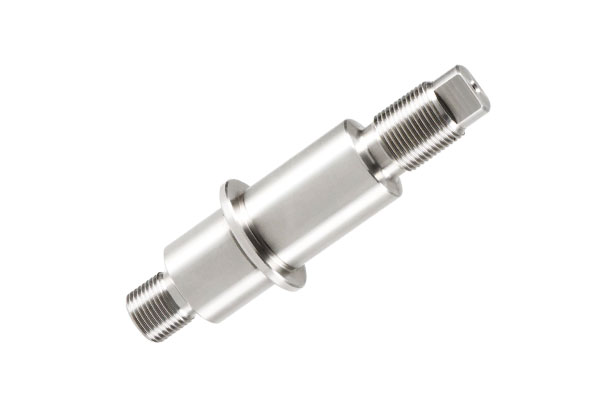
| 산업 / 부문 | 일반적인 응용 프로그램 | Key Performance Requirement |
| 판막 & Pump Industry | 밸브 줄기, 좌석, 펌프 샤프트, 패스너 | High resistance to galling, 슬라이딩 마모, adhesive seizure |
| 산업기계 | 문장, 부싱, high-wear mating surfaces | 표면 경도, work-hardening capability, 낮은 마찰 |
| 자동차 & 중장비 | 패스너, high-wear components, 액추에이터 | Galling prevention, durability under repeated sliding or contact |
| 해양 응용 | Deck hardware, mechanical joints | Moderate corrosion resistance with high wear/galling protection |
| 화학적 처리 | Mixer shafts, agitator blades | Wear-resistant components where moderate corrosion occurs |
Application Guidance
- Choose UNS S20910 when the primary concern is corrosion resistance in aggressive or sour environments, especially when toughness, 용접 성, and low-temperature performance are required.
- Choose UNS S21800 when 못살게 괴롭히는, 입다, and sliding contact dominate failure modes, even if corrosion resistance is less critical.
- In complex assemblies, hybrid designs can leverage both alloys—using S20910 for corrosion-critical parts and S21800 for high-wear mating surfaces.
Surface engineering such as 코팅, 질화, or PVD treatments can further extend service life when combined with these alloys.
9. Direct Comparison Table: UNS S20910 vs UNS S21800
| 특징 / 재산 | UNS S20910 (아크로닉 50) | UNS S21800 (아크로닉 60) | Practical Implication |
| Primary Focus | 부식 저항, 강인함 | Wear/galling resistance, 표면 경도 | Guides selection based on environment and mechanical stress |
| 항복 강도 (MPA) | 350–420 | 320–380 | S20910 has higher baseline strength; S21800 can achieve higher surface hardness via cold work |
| 인장 강도 (MPA) | 650–750 | 600–700 | S20910 slightly higher; S21800 optimized for wear resistance rather than ultimate strength |
| 연장 (%) | 30–45 | 25–40 | S20910 more ductile; S21800 slightly less but adequate for fabrication |
| 경도 (HRB / HRC) | HRB ~85 typical annealed | HRB ~85, can increase with work hardening | S21800 better for galling and surface wear applications |
| 충격 강인함 | 훌륭한; retains cryogenic performance | 좋은; lower at cryogenic temperatures | S20910 preferred in low-temperature or dynamic loading environments |
| 부식 저항 | 매우 높습니다 | 보통의 | Guides alloy choice in chemical, 선박, or sour-service applications |
| 입다 / Galling Resistance | 보통의 | 매우 높습니다 | S21800 is the preferred option for moving parts, 밸브 줄기, 그리고 패스너 |
| 제작 & 용접 | 훌륭한; solution annealed or strain-hardened | 좋은; requires consideration for welding filler and machining parameters | S20910 easier to fabricate in complex geometries; S21800 may require tooling adjustments |
| 최대 서비스 온도 | ~900°C | ~750°C | S20910 suitable for higher temperature corrosion exposure; S21800 for wear-exposed moderate temperatures |
| 목재 (구덩이 저항에 해당하는 숫자) | ~34 | ~23.4 | S20910 provides superior resistance to pitting and crevice corrosion, 특히 |
10. 결론
우리를 S20910 대 S21800 are complementary alloys within the Nitronic family.
Pick S20910 where corrosion resistance (especially pitting/crevice and sour service) plus toughness and weldability are paramount.
Pick S21800 where galling and wear dominate and corrosion is a secondary concern.
In many real applications the optimum solution is a combination—design the system so each part sees the alloy best suited to its dominant failure mode, or apply surface engineering to extend service life.
FAQ
Are UNS S20910 and S21800 magnetic?
No—both are fully austenitic (or near-fully austenitic) 어닐링 된 상태에서, with magnetic permeability <1.005 (ASTM A342). Cold working may induce weak magnetism, but this is reversible via annealing.
Can I weld S21800 with standard stainless fillers?
예, but select fillers and procedures to accommodate S21800’s high Si/Mn chemistry—consult welding procedure specifications and filler supplier guidance.
Which alloy resists sulfide stress cracking (SSC)?
S20910 is commonly accepted for many SSC environments and is used in NACE-subject applications; verify specific NACE/ISO certification and hardness limits.
Is Nitronic 60 (S21800) suitable for seawater?
It has reasonable general corrosion resistance in seawater but lacks the pitting resistance of Nitronic 50 or Mo-bearing grades; if seawater pitting is critical, choose S20910 or a higher PREN alloy.
Can either alloy be heat-treated to increase strength?
These austenitic alloys gain strength mainly by 차가운 일 그리고 합금; conventional quench/temper treatments are not used to significantly increase strength. Solution annealing restores ductility/corrosion resistance.
